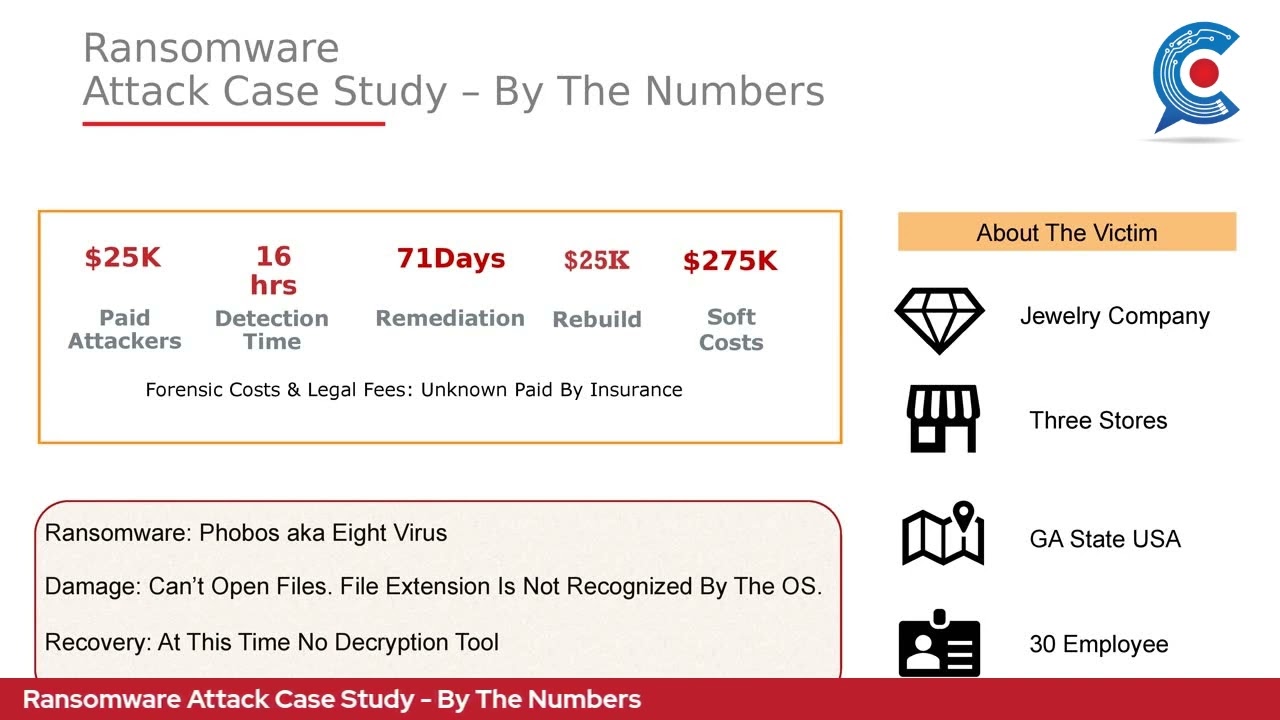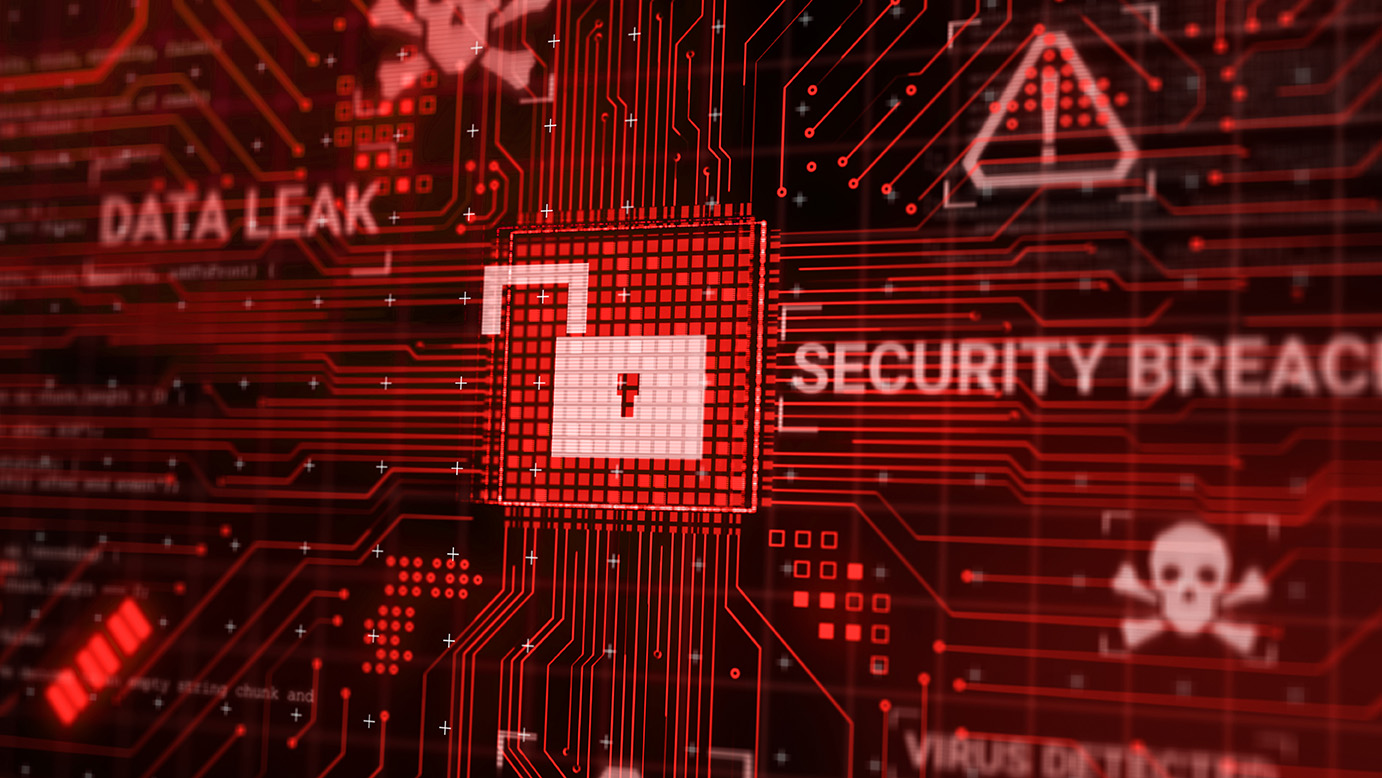AI & Cybersecurity
Artificial Intelligence (AI) is becoming a major player in cybersecurity. The global market for AI is set to grow at an annual rate of 36.8%, with its value expected to reach about $2.745 billion by 2032, up from $177 billion in 2023.1
This rapid growth shows how AI shapes how we protect our digital systems and data from cyber threats.

How Is AI Used In Cybersecurity
AI is increasingly used in cybersecurity to help protect systems, data, and networks from cyber threats. A global survey of over 4,500 technology decision-makers from various sectors revealed that 45% of large companies and 29% of small and medium-sized enterprises (SMEs) have adopted AI.
Here are some ways AI is applied:
1. Threat Detection
AI can detect cyber threats by analyzing large amounts of data. It can recognize patterns that indicate an attack is happening or about to happen. For instance, AI can notice unusual login attempts or strange network traffic, which might be signs of a cyberattack.
2. Automated Responses
When a threat is detected, AI can automatically respond to it. This could involve blocking access to sensitive data, shutting down compromised systems, or alerting security teams. Automating these responses helps stop attacks faster, reducing potential damage.
3. Predictive Analysis
AI can predict future attacks by studying past incidents. By identifying trends, AI can help security teams prepare for potential threats before they happen. This allows organizations to be more proactive in their cybersecurity efforts.
4. Malware Detection
AI is good at identifying malware, which is software designed to harm computers. It can recognize new types of malware by analyzing how it behaves, even if that malware has never been seen before.
5. Bot Detection
AI can spot bots by looking for behaviors typical of bots, like making lots of requests quickly or acting in a repetitive way. Once AI identifies a bot, it can automatically block it from accessing websites or services. This prevents bots from causing problems like spamming or overwhelming servers.
6. User Behavior Analysis
AI can track how users normally behave on a network. If someone starts doing something unusual, like downloading a lot of files they normally wouldn’t, AI can flag this as suspicious and possibly stop the activity.
7. Phishing Prevention
AI helps prevent phishing attacks, where attackers trick users into giving away sensitive information, like passwords. AI can spot fake emails or websites that are trying to steal information, protecting users from falling for these scams.
8. Incident Response Assistance
AI can assist cybersecurity teams by providing recommendations on how to handle security incidents. It can quickly analyze data from the attack and suggest the best course of action to help teams respond more effectively.
AI can assist cybersecurity teams by providing recommendations on how to handle security incidents. It can quickly analyze data from the attack and suggest the best course of action to help teams respond more effectively.

Can AI Be Used By Hackers
Over 60% of companies that use AI realize that cybersecurity risks associated with AI adoption are among the biggest concerns. This is particularly pressing because hackers can use AI to make their attacks more powerful and harder to stop.
Here’s how they might use AI:
1. Automating Attacks
AI can help hackers automate their attacks, making them faster and more widespread. For example, AI can be programmed to scan thousands of systems for vulnerabilities, find weak spots, and launch attacks without needing a hacker to control each step.
2. Creating Smarter Malware
Hackers can use AI to create malware that adapts and changes. This makes it harder for traditional security systems to detect and block. The AI-generated malware can learn from its environment and adjust its tactics to avoid detection.
3. Ransomware Attacks
AI is used in ransomware attacks to simulate and improve the creation of malicious software, making it more effective at targeting and encrypting valuable data. The National Cyber Security Centre (NCSC) found that AI is expected to increase the global ransomware threat.
4. Social Engineering Attacks
Hackers can use AI to create more convincing phishing, vishing, and spear phishing emails, or fake websites. AI can analyze social media accounts, business profiles, and other online information to create personalized and believable messages that fool people into clicking on malicious links or giving away their passwords.
5. Password Cracking
AI can be used to guess passwords by learning patterns in how people create passwords. This can speed up the process of breaking into accounts, especially if users have weak or predictable passwords.
6. Creating Deepfakes
Deepfakes are fake videos or images created using AI. Hackers can use them to create realistic but false videos of people saying or doing things they never did. This can be used to spread misinformation, blackmail, or trick people into believing something that isn’t true. Deepfakes are a growing security concern because they can be used for fraud or deception.
7. Evasion Techniques
Hackers can use AI to avoid detection by security systems. AI can study how defenses work and find ways to slip through unnoticed. This makes it more difficult for cybersecurity teams to stop an attack.
AI can be a powerful tool for hackers that helps them automate, disguise, and strengthen their attacks. This makes the cybersecurity battle even more challenging, as defenders need to stay ahead of AI-driven threats.

How To Maintain Security as AI Continues to Change
Deep Instinct’s recent Voice of SecOps Report shows that 97% of security experts are worried their organization might face an AI-generated cyberattack. As a result, 75% have adjusted their strategies in the past year to deal with the rise of AI-powered cyber threats.
As AI technology is increasing at a rapid pace, staying secure involves several key steps.
- Regularly update your security systems to handle new threats that AI might bring. This means keeping your software and tools current.
- Educate yourself and your team about the latest AI advancements and how they could affect security. Awareness helps in spotting potential risks early.
- Use AI tools that adapt and learn from new types of attacks, making them more effective over time.
- Combine AI with human expertise; while AI can handle many tasks, having skilled security professionals helps manage threats and make important decisions.
You can keep your systems secure even as AI technology grows and changes by staying updated, informed, and prepared.
Regulating AI for Better Data Privacy & Security
According to Gartner, Inc., more than 40% of privacy compliance technology will depend on AI in 2023.
As AI becomes more integral to privacy compliance, Europe is leading the charge with new laws like the AI Act (AIA), which aims to make AI systems safer and more transparent. This law ensures that AI systems are used responsibly to protect people’s data and privacy.
In addition, the General Data Protection Regulation (GDPR) in Europe also sets strict guidelines on how personal data should be handled, ensuring that people have control over their data and that organizations use it securely.
Key Issues in the U.S.:
- How AI creates misleading information and deepfakes. This involves creating laws and regulations to prevent AI from being used to spread false information, especially in politics and public debates.
- AI’s ability to generate content raises concerns about protecting copyrights and online intellectual property. New regulations will guarantee that a creator’s work is not misused.
- How AI will influence the job market. This means offering training and support to help people adapt to new roles and technologies.
- How AI is used fairly in areas like finance, healthcare, housing, education, and jobs. This involves creating ordinances to prevent discrimination and provide equal opportunities.
- To build trust in AI, there’s a need for transparency about how AI systems operate and make decisions.
Around the globe, several countries are working on regulations to address these challenges and make AI technology safer and more reliable for everyone.
Is AI The Future Of Cybersecurity
AI is playing a big role in the future of cybersecurity, but it’s not the only thing we’ll need.
What Experts Say:
According to Steve Magnani, cybersecurity and risk consultant at Altria and 2Secure, he sees AI being able to come in and “sort of take over a lot of manual related tasks as it relates to managing a network.”
This automation not only speeds up these processes but also reduces the likelihood of human error, allowing cybersecurity professionals to focus more on strategic aspects of network security.
Seth Melendez, president of WareGeeks Solutions, mentions that AI is necessary but not the whole picture. He said, “We’re not going anywhere. Certain parts of the industry may disappear [like] certain low-level coding, certain low-level scripting, but even more intricate coding is not going anywhere.”
This means that while AI will be a major part of cybersecurity, human expertise will still be required to tackle advanced security challenges and develop new solutions.

FAQ
What Is Responsible AI In Cybersecurity?
Responsible AI in cybersecurity means using AI in a way that is ethical and trustworthy. It involves making sure AI systems are fair, secure, and used properly to protect people and data without causing harm or discrimination. It’s about balancing advanced technology with strong principles and oversight.
Is AI Going To Take Over Cybersecurity?
AI will not fully take over cybersecurity. It will assist by detecting threats faster and automating tasks, but human expertise will still be needed. Security experts will continue to handle complex problems and make decisions that AI cannot. AI is a tool to enhance, not replace, human efforts in cybersecurity.
What Is The Best AI For Cybersecurity?
There isn’t a single “best” AI for cybersecurity. The choice depends on needs. Popular options include AI systems from companies, which offer strong endpoint detection and response. Choose AI tools that fit your specific security needs and integrate well with your existing systems.
How Can AI Help Predict & Prevent Cyberattacks?
AI helps predict and detect signs of advanced attacks like ransomware, data theft, and social engineering. 2Secure uses AI to counter these sophisticated threats by spotting and stopping attacks before they happen.

Source:




